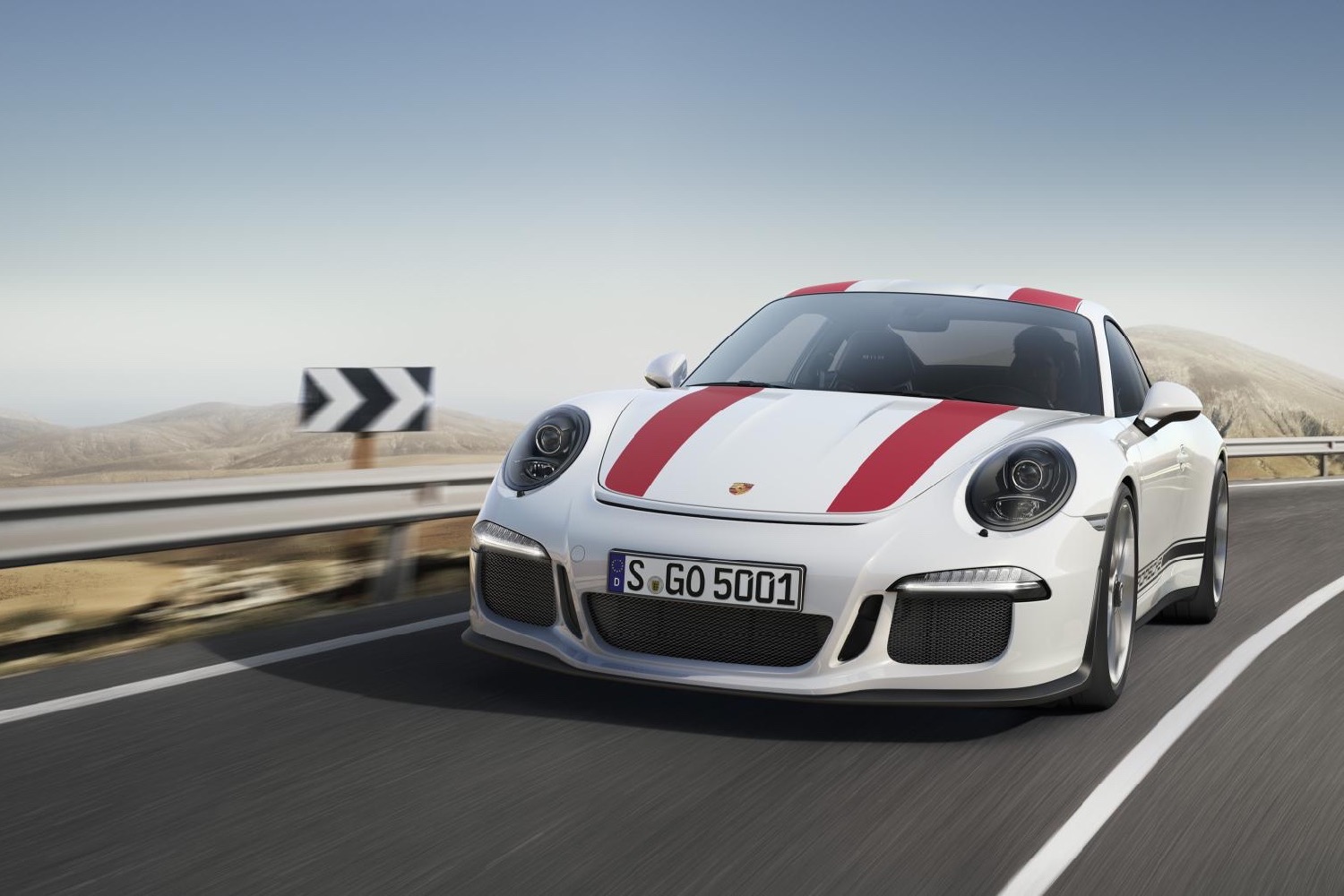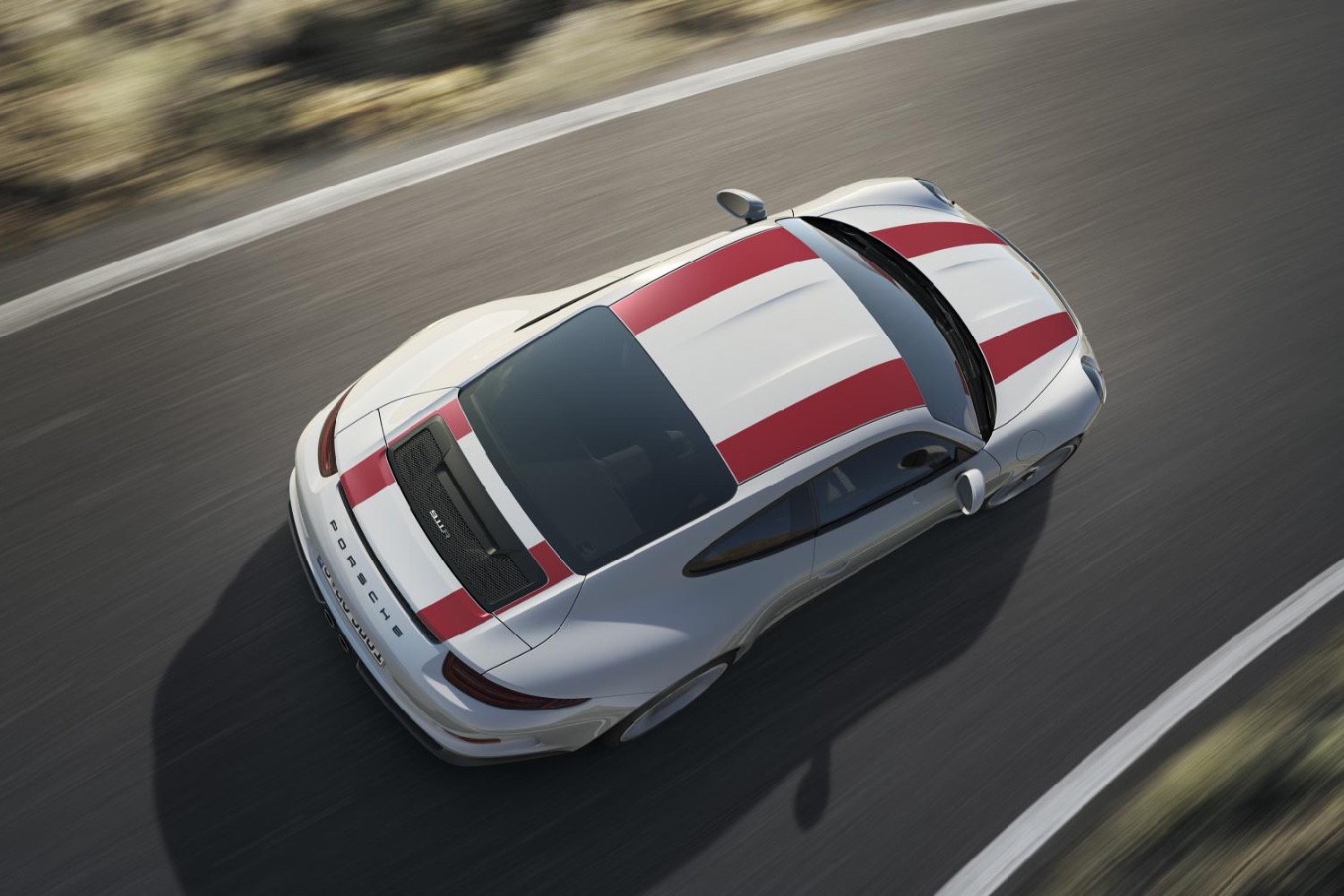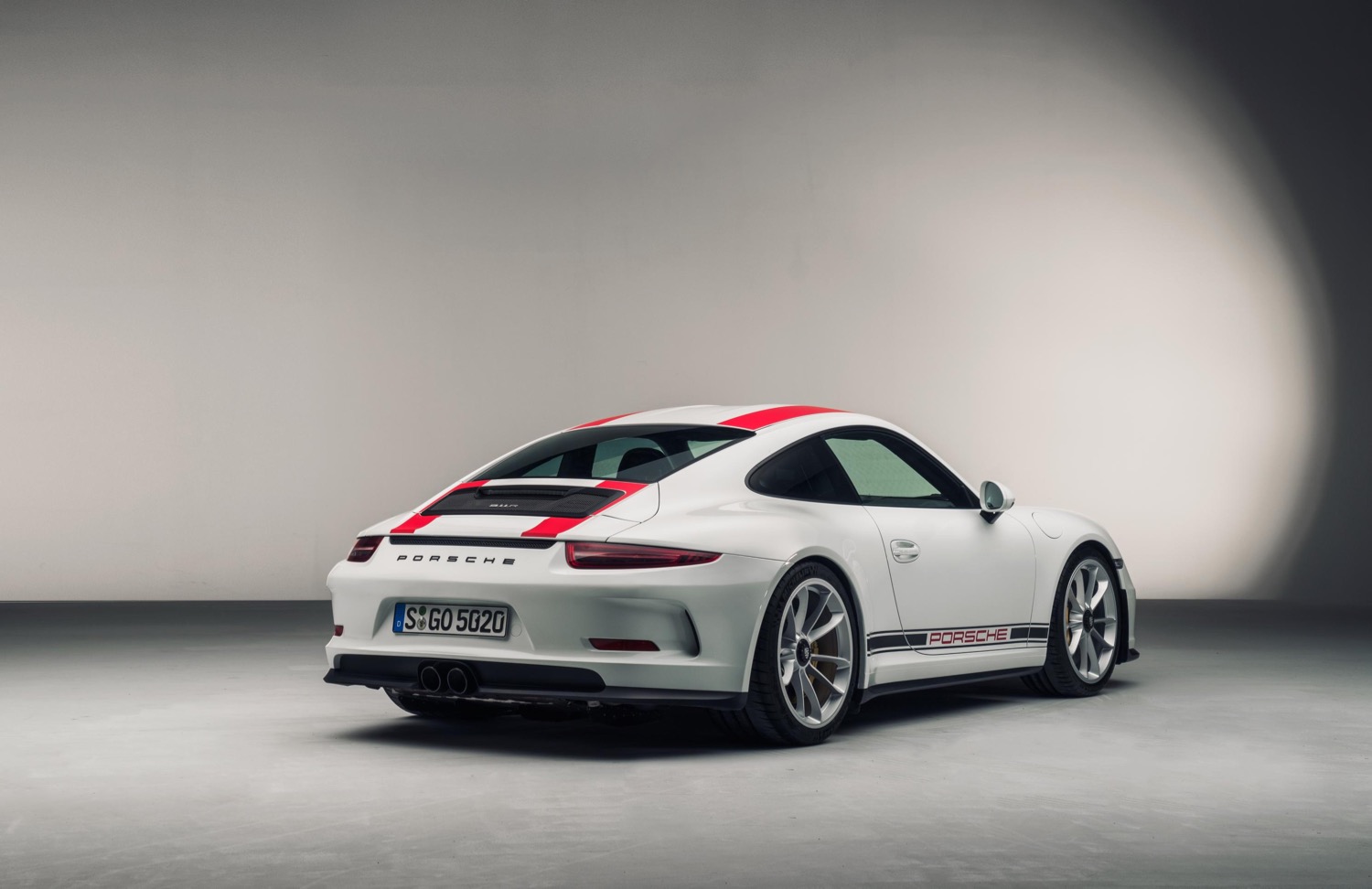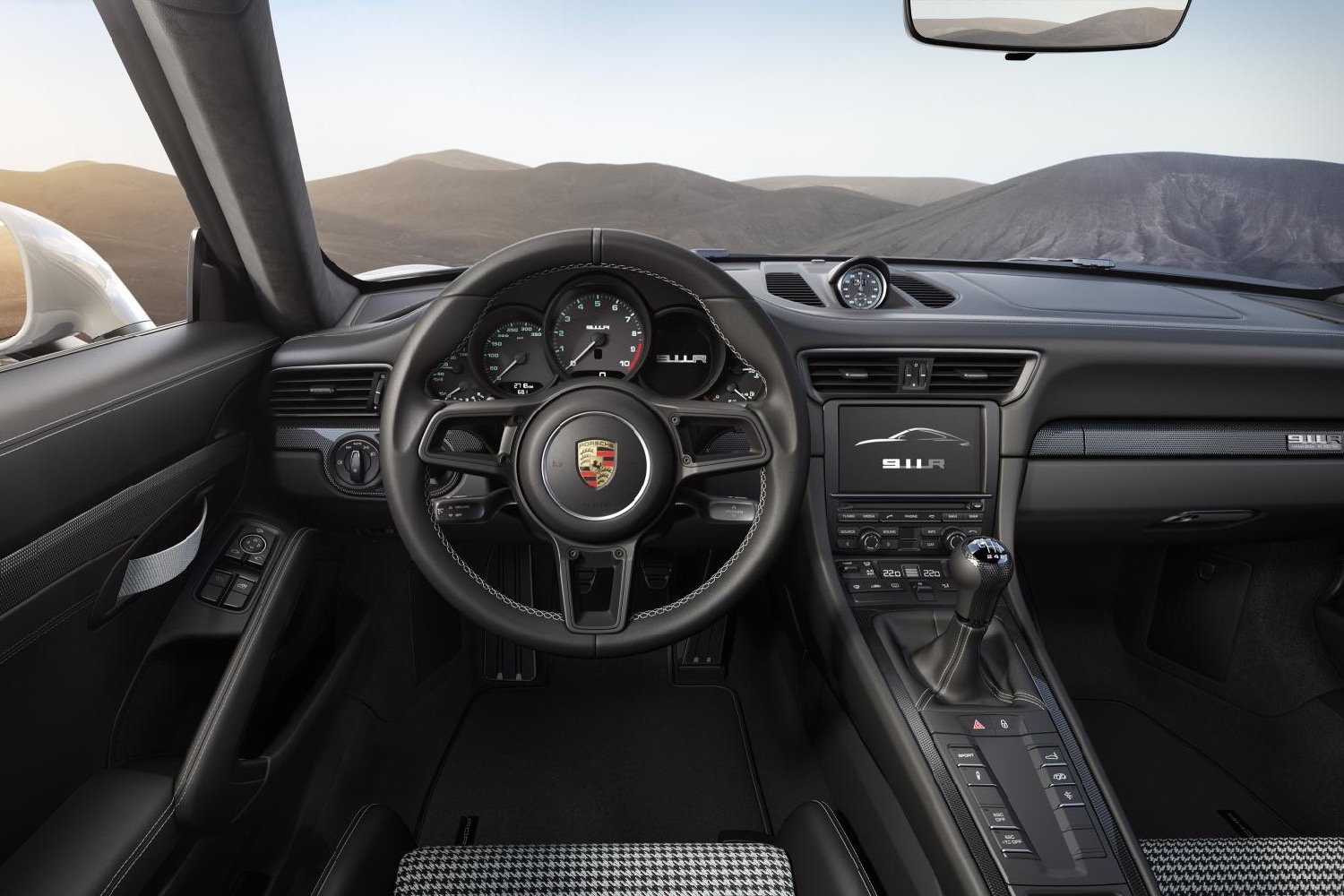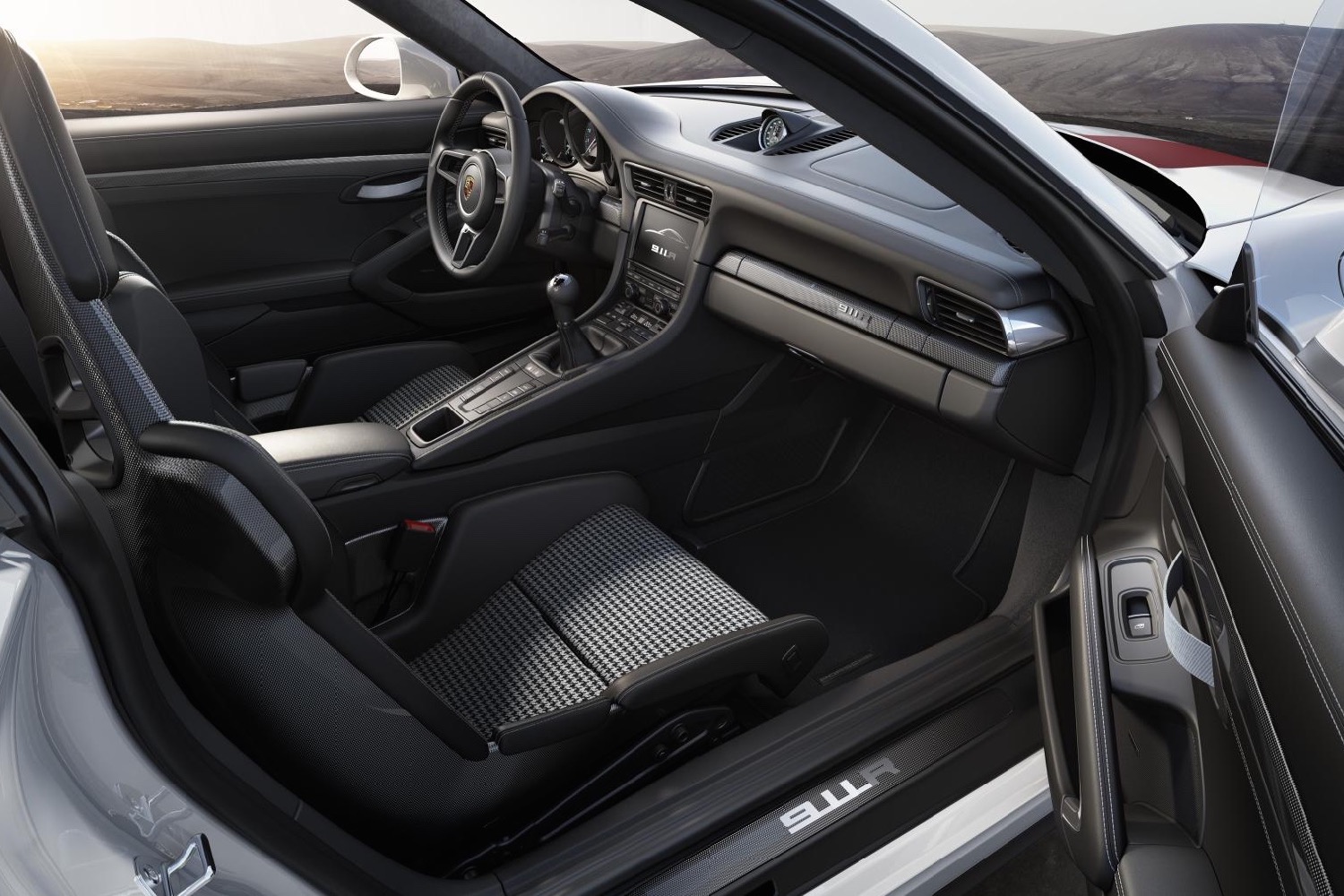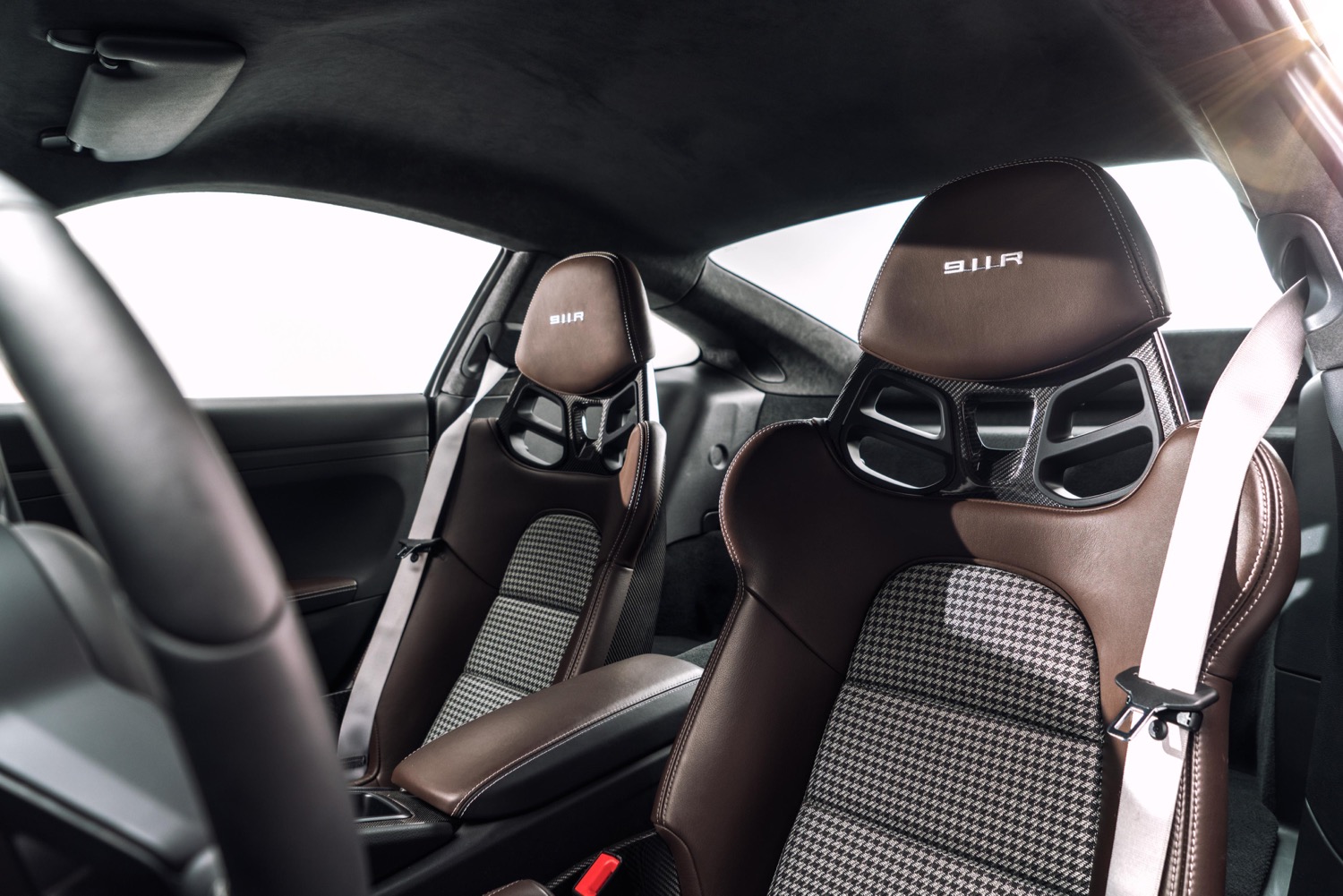The current Porsche 911 GT3 and GT3 RS are undeniably impressive performance machines, but they’ve been accused of being a bit un-involving. The cars’ reliance on technology, and in particular their lack of manual transmissions, has upset enthusiasts, stellar performance numbers or not.
The Porsche 911 R that debuts this week at the 2016 Geneva Motor Show is Weissach’s answer to those critics. This new model isn’t the ultimate 911, but is more focused on providing a satisfying experience than any other recent version of Porsche’s iconic sports car. And yes, it does have a manual transmission.
That transmission is actually a six-speed, not the seven-speed gearbox offered in other 911 models. Unlike that transmission, which has to balance sportiness with fuel economy, the six-speed has a more performance-oriented setup, with closer gear ratios. And while Porsche is switching to turbocharging for most of its 911 models, the R gets a naturally-aspirated 4.0-liter flat-six from the GT3 RS.
This engine produces 500 horsepower and 338 pound-feet of torque. Proving that back-to-basics sports cars don’t have to be slow, it can rocket the 911 R from 0 to 60 mph in 3.7 seconds, and on to a top speed of 200 mph. The muscular engine certainly deserves some credit for that performance, but the diet Porsche put the 911 R on also helps. The car weighs 3,021 pounds, or 110 pounds lighter than the GT3 RS. That’s thanks to some carbon fiber and magnesium parts, reduced interior insulation, and deletion of the rear seats, air conditioning, and audio system (the latter two items can be added back).
The rest of the performance hardware is a good mix of analog and digital. The 911 R features a mechanically-controlled rear differential and carbon-ceramic brakes, plus special tires mounted on 20-inch wheels. But Porsche didn’t get rid of the electronic oversight, keeping its Porsche Stability Management stability control and adding an optional rev-matching function.
Like the rest of the car, the 911 R’s styling is a mix of bits from different Porsche models. Most of the body carries over from the 911 Carrera, but the front and rear fascia come from the GT3. There’s also a model-specific front spoiler and rear diffuser, and if you buy one of these and don’t get the optional racing stripes, then you’re no fun.
On the inside, the driver and passenger get bucket seats with carbon-fiber backrests. The driver gets to play with an R-specific steering wheel and shifter, too. There’s some carbon fiber trim, but no door handles. Porsche replaced them with fabric straps, as it often does on hardcore performance models.
The 2016 Porsche 911 R will reach U.S. showrooms in late summer. Pricing starts at $185,950 (including destination).


